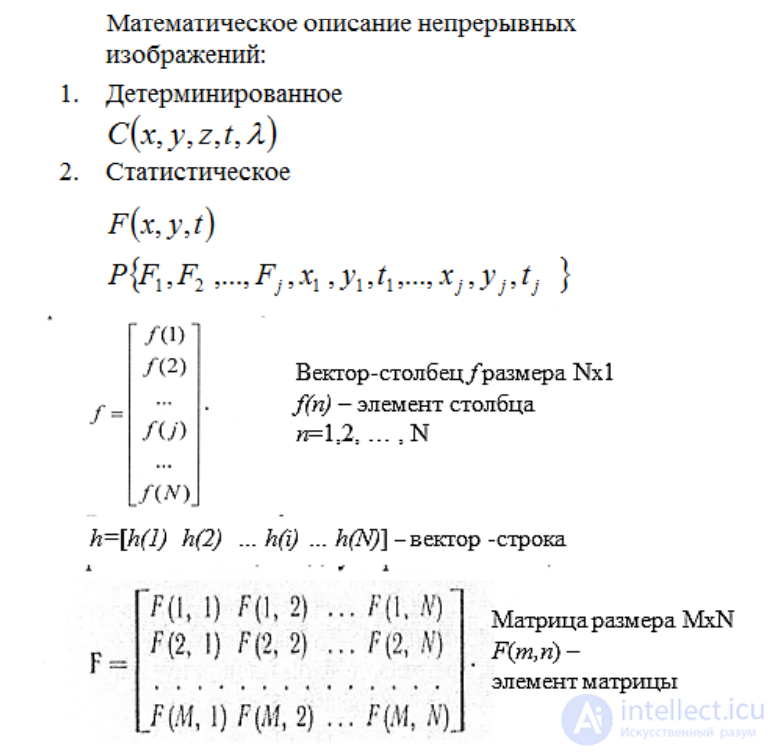Lecture
This book focuses primarily on digital rather than analog image processing methods. However, in most cases, a digital image is obtained from a natural continuous image. An exception are artificial images, such as computer-generated test tables or tomograms. Therefore, it is important to understand how image formation takes place with the help of various transducers and optical systems, including the human visual system. Another significant issue is light measurements for the quantitative description of images. It is also useful to study the spatial and temporal properties of a continuous light field, which determine the nature of the relationship between the elements of a digital image. These issues are discussed in ch. 1-3. Chapter 1 is devoted to the mathematical description of continuous images, in ch. 2 describes the psychophysical properties of vision, and in Ch. 3 summarizes photometry and colorimetry.

When developing and analyzing image processing systems, it is convenient, and often necessary, to have a mathematical description of the images to be processed. There are two main approaches to this description: deterministic and statistical. In a deterministic description, a mathematical function representing the image is introduced, and the properties of the image to each point are considered. When the statistical description of the image is determined by the averaged characteristics. The following sections are devoted to both deterministic and statistical descriptions of continuous images. Although the above analysis relates to visually perceptible images, many results can be extended to two-dimensional time-varying signals and fields of a general form.
Comments
To leave a comment
Digital image processing
Terms: Digital image processing